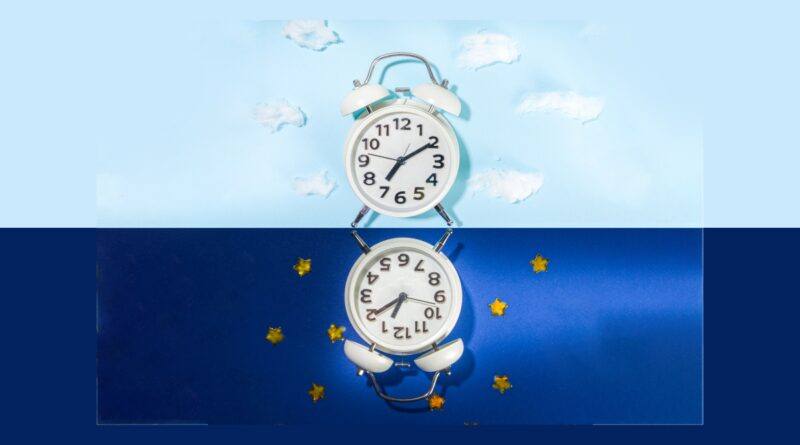A Better Understanding Of The Circadian Rhythm And Fertility Potential
The circadian clock, which is a temporal program that developed as an adaptation on earth’s rotation, is one of the most basic physiological mechanisms exerting its effect through the control of metabolism, endocrine and immune function as well as behavior. Due to its numerous systemic effects it would be reasonable to expect that circadian clock is also involved in mechanisms involved in human reproduction. Disrupted eigen and external zeitgebers, which are increasingly prevalent in modern societies could well contribute through circadian disruption, social jet lag and circadian misalignment to impairment of reproduction. Namely, when perturbed, impairment of the system may through the disregulation of physiological processes such as cell cycle progression, hormone secretion, immune regulation contribute to several human diseases including cancer, diabetes, obesity, cardiovascular and neurodegenerative diseases and sleep disorder.
The circadian clock is both autonomous, based on cellular clocks which build rhythmic activity of tissues, organs and entire organism as well as controlled by synchronization and entrainment processes through environmental signals of the central pacemaker rooted in the suprachiasmatic nucleus. Molecular components of the circadian clock network represent positive and negative transcriptional–translational feedback loops of many genes.
Chronobiology of male fertility potential:
Testis a complex organ in which several cell types directly produce gametes, but are also the major source of circulating androgens with ultradian (multihour), infradian (multiday) and seasonal periodicity of the seminiferous epithelium, Sertoli and Leydig cells.
Epidemiological evidence supports the role of the circadian clock on the normal male reproduction in humans. Several studies suggested that annual rhythms of human conception rates were correlated with the season as well as photoperiod, monthly averages of daily hours of sunshine, minimum and maximum temperature and humidity. The quality of semen changed both diurnally and seasonally: semen samples collected in the early morning showed the highest levels in sperm concentration, total sperm count and normal morphology.
Evidence for daily diurnal variance in sperm DNA fragmentation index was demonstrated. In addition to diurnal variation in sperm parameters, seasonal variation has been reported in several studies. Increase in sperm concentration and total sperm count was reported in spring, while summer was associated with the highest percentage of normal morphology and significant decreases in sperm concentration and total sperm count. Similarly, better sperm parameters were found in normozoospermic and oligozoospermic men in spring in winter with higher volume of sperm.
An additional level of evidence for the role of the circadian clock in male reproduction comes from circadian rhythm disruptors including sleep. Sleep/ wake cycles are intertwined with the circadian system and several lines of evidence link sleep with male reproduction. Sleep duration is associated with testis volume, male fecundability, total sperm number and semen volume, sperm chromatin integrity.
Chronobiology of female fertility potential: The site of the ‘master biological clock’ in mammals is the suprachiasmatic nucleus (SCN). The SCN cells contain a wide range of neurotransmitters, hormones and cytokines as well as receptors. An obvious consequence of the localization of the neurotransmitter and hormone receptors in the SCN is that the biological clock and circadian rhythmicity can potentially be altered by drugs and endogenous hormones. The output component of the circadian timing system translates internal time into physiological action. Neural pathways are the major means of controlling brain and peripheral tissue rhythmicity.
The best known pathway controls the pineal gland production and secretion of melatonin. The melatonin participates in the seasonal production and secretion of prolactin The SCN projects to other parts of the brain involved in reproduction including the medial pre-optic area (MPOA) and GnRH-positive cells and consequently the affects timing and magnitude of the LH surge. The sympathetic innervation of the ovary and uterus may also be influenced by the SCN.
Conclusion:
Thus, it can be concluded that the circadian rhythm plays important role in determining the fertility potential in both males and females. So proper circadian hygiene should be practice so as to have normal fertility potential.


1*Dr. Amit Kant Singh, 2 Dr. Charushila Rukadikar
Professor, Dept. of Physiology, U.P. University of Medical Sciences, Saifai, Etawah, India
Assistant Professor, Dept. of Physiology, All India Institute Of Medical Sciences, Gorakhpur, India





I do consider all the ideas you have presented for your post. They’re really convincing and will definitely work. Nonetheless, the posts are very brief for beginners. May you please extend them a bit from subsequent time? Thanks for the post.
My brother recommended I might like this blog. He was once totally right. This post truly made my day. You can not consider simply how a lot time I had spent for this information! Thank you!
I wish to express my love for your kindness in support of those individuals that actually need help with this one situation. Your personal commitment to passing the solution up and down became exceptionally valuable and has allowed some individuals much like me to get to their desired goals. The important help and advice signifies a whole lot to me and even further to my office workers. Thanks a lot; from everyone of us.
I doo not eveen know the way I finished up here, butt I
assimed thnis publish useed to bbe great. I doo not realjze wwho you’re
butt definitely yoou arre going tto a famous blogger if you aare nnot
already. Cheers!